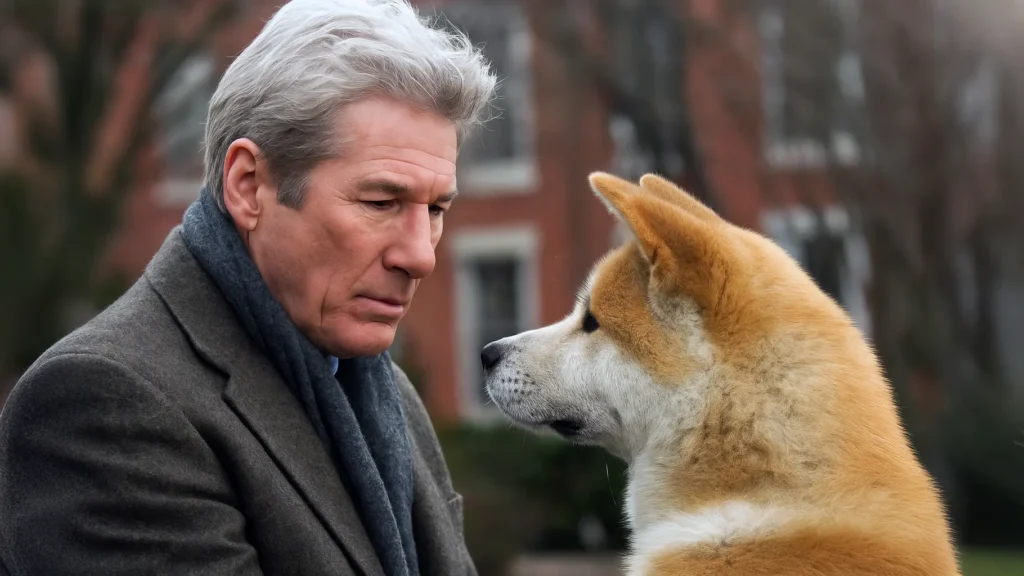"The Eternal Wait"—Hachiko: The True Story Behind the World’s Most Loyal Dog

The Beginning: A Puppy’s Perilous Journey
In January 1924, a frail Akita puppy endured a 20-hour train ride from Ōdate, Akita Prefecture, wrapped in a rice bag for warmth. Upon arriving in Tokyo, he was so weak that Professor Hidesaburō Ueno and his partner, Yaeko Sakano, initially thought he was dead. They nursed him back to health over six months, naming him "Hachi" (meaning "eight") after the shape of his forelegs and adding "-kō" as an honorific—a term once reserved for nobility.
Hachi accompanied Ueno daily to Shibuya Station, weaving through bustling commuters to greet his owner’s return. Ueno, a childless agriculture professor at Tokyo Imperial University, treated Hachi like a son, even letting him sleep under his bed.
The Tragedy and the Unbroken Promise
On May 21, 1925, Ueno suffered a fatal cerebral hemorrhage during a lecture. That evening, Hachi waited in vain at Shibuya Station. For three days, he refused food, huddling near Ueno’s clothing.
Despite being rehomed with Ueno’s former gardener, Kikuzaburō Kobayashi, Hachi escaped repeatedly to return to the station. For 9 years, 9 months, and 15 days, he appeared precisely when the 3:00 PM train arrived—rain, snow, or shine. Station staff initially shooed him away; vendors poured water on him, and children pelted him with stones.
How a Newspaper Story Made Hachikō a National Symbol
In 1932, Hirokichi Saitō—a former student of Ueno and founder of the Japanese Dog Preservation Society—spotted Hachi at the station. His article in Asahi Shimbun ignited a national sensation. Overnight, Hachi became Chūken Hachikō ("Faithful Dog Hachikō"). Donations flooded in for his care, and visitors traveled nationwide to offer treats. Teachers used his story to teach loyalty; poets wrote haikus in his honor.
Remembering Hachikō in Statues and Science
- The Statues: In 1934, artist Teru Andō unveiled a bronze statue at Shibuya Station—with Hachi himself attending the ceremony. Melted during WWII for metal, it was rebuilt in 1948 by Andō’s son, Takeshi. Today, the "Hachikō Exit" remains Tokyo’s most iconic meeting spot.
- Global Tributes: Replicas stand at Ōdate Station (Hachi’s birthplace), Rhode Island’s Woonsocket Depot (where Hachi: A Dog’s Tale was filmed), and Tokyo University—where a 2015 statue shows Hachi joyfully leaping into Ueno’s arms.
Hachikō’s Death and What We Later Learned
Hachi died on March 8, 1935, on a Shibuya street. A 2011 autopsy revealed terminal cancer and a parasitic infection—not the yakitori skewers found in his stomach, as once rumored. Over 4,000 mourners attended his funeral. His pelt was preserved at Tokyo’s National Science Museum; his ashes rest beside Ueno at Aoyama Cemetery.
Professor Ueno’s Lost Diary: The Words He Left Behind
“In 2011, archivists at Tokyo University discovered Ueno’s personal diaries—including never-seen notes about Hachi. One entry reads: ‘[...] foolish, good dog.’
‘Hachi waited at the gate for three hours in the rain today. Such a foolish, good dog. When I scolded him, he only wagged his tail and pressed his wet face into my knees. This creature’s love is unreasonable—and utterly without regret.’

Another, scribbled just days before Ueno’s death:
‘Hachi chased sparrows in the yard this morning. For the first time in months, I laughed until my sides hurt. How does an animal so small bring such light?’
These fragile pages, still bearing ink smudges and creases, reveal a bond deeper than legend. Not master and pet, but two souls who saved each other.”
Why Hachikō’s Story Still Matters Today
- Cultural Roots: Hachi embodied meiyo (honor) and chūgi (loyalty)—values amplified during Japan’s pre-war nationalist era. Helen Keller, upon visiting his statue in 1937, requested her own Akita.
- Modern Resonance: Richard Gere’s 2009 film Hachi: A Dog’s Tale relocated the story to America but kept its soul. In 2023, Ōdate celebrated Hachi’s 100th birthday with exhibitions and ceremonies.
- A Mirror to Humanity: As scholar Christine Yano notes, Hachi represents "unquestioning devotion"—a balm in today’s transient world.
Statues of Hachiko Worldwide:
- 🐕 Shibuya Station, Tokyo: The 1948 reboot, draped in scarves or Santa hats by admirers.
- 🎓 University of Tokyo: Reunites Hachi with Ueno eternally.
- 🇺🇸 Woonsocket, Rhode Island: Film homage near the "Bedridge Station" set.
- 🌾 Ōdate Akita Dog Museum: Stands on the original Shibuya pedestal.

Epilogue: The Paw Prints on History
Each year on March 8, Shibuya Station hosts a memorial. In 2023, crowds sang "Hachikō’s Song" from a local minibus jingle 5. His story—etched in bronze, film, and hearts—shows how loyalty can connect people across time and culture. As Eietsu Sakuraba, author of Hachiko: The True Story, reflects:
"Even 100 years from now, this unconditional love will remain unchanged".
Further Exploration:
- Visit Hachi’s fur at Tokyo’s National Science Museum.
- Read Prof. Mayumi Itoh’s biography detailing his autopsy and Ueno’s nursing.
- Watch Hachi: A Dog’s Tale (2009)—noted for humane animal treatment during filming.

Leave a Reply